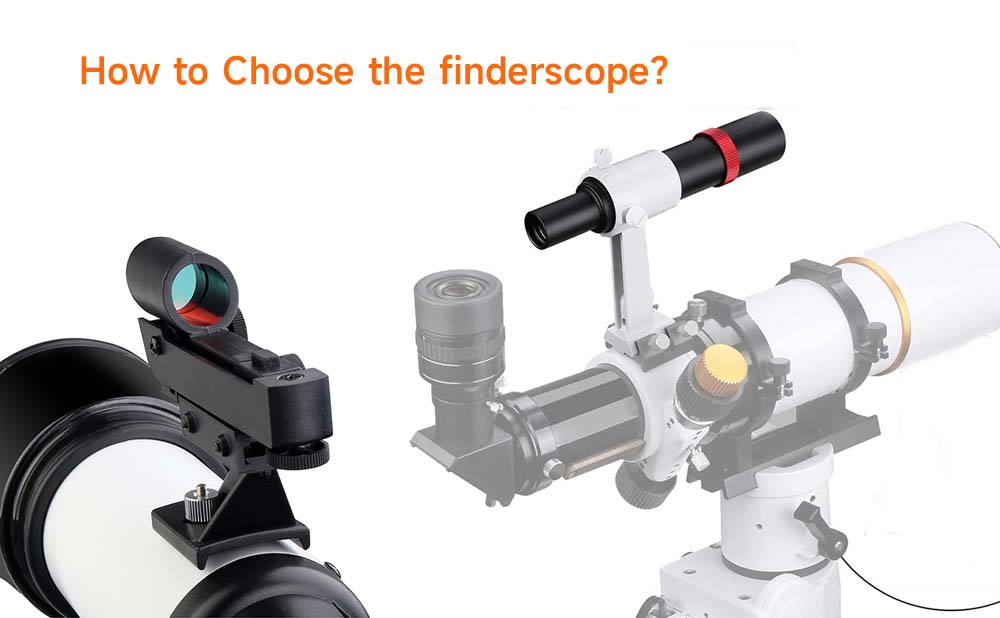Table of Contents

The Importance of Finder scopes for eclipse
Five planets in our solar system are easily observed without a telescope: Mercury, Venus, Mars, Jupiter and Saturn.
Earth's Moon is a constantly changing celestial sight, from night to night. It goes through phases each month, waxing as it becomes full, and waning as the full moon shrinks back to a crescent.
There are two main types of eclipses: solar and lunar. Lunar eclipses can also be partial, where only part of the Moon falls into shadow, or total. Importantly, solar eclipses should never be viewed with unprotected eyes, while lunar eclipses are safe to view with the naked eye.
Finding celestial objects can be a challenge when using a telescope alone, primarily due to the telescope's narrow field of view. Choosing the best finderscope for your telescope will make finding and centering celestial objects easier, and some finder scopes can also be used for terrestrial viewing or guiding during astrophotography sessions.

The full moon eclipse Captured by Mitch Gallant https://www.jensign.com/Astronomy/S23Ultra/BloodMoon_LunarEclipse_Mar14_2025/
What is a Finderscope?
A finder scope is a small auxiliary telescope mounted on top of your main telescope, pointing in the same direction. It typically offers a wider field of view than the main telescope, allowing you to see more of the sky at once. This capability facilitates the identification of astronomical objects before observing them through your primary instrument.
The Styles of Different Finderscopes
The finder scopes usually come in various styles, including:
- 1. Red Dot Finders: These use an LED light to mark the direction your telescope is aligned. They do not magnify the image but cover a larger area of the sky.

- 2. Right Angle Finders: More convenient for viewing since they allow you to look at an angle rather than directly down the barrel.

- 3. Straight Through Finders: Require you to angle your face down alongside the telescope to see through it.

- 4. Solar Finders: Solar finders are a special type of finder. With theses, the Sun can be safely located.

Features to Consider When Choosing a Telescope Finderscope
When selecting a finder scope for your telescope, please take the following features into consideration:
-
Overall Construction: Ensure that the finder is solidly built. Loose parts or a poorly constructed bracket can affect performance.
-
Optics: Look for a finderscope with a front lens free from aberration, sharp across the field of view, and preferably multicoated to enhance light transmission.
-
Focusing Mechanism: Check if the finderscope is easy to focus and whether it locks in position after focusing. Pay attention to the type of adjustment (front or rear) and any potential play while focusing.
-
Holding Bracket: A well-constructed bracket will allow for easy alignment. Soft-capped screws can prevent scratches on the finderscope tube.
-
Crosshairs: The crosshairs should be sharp and centered within the field of view. If illuminated, make sure they aren’t too bright or dim.
Setting Up Your Finderscope
Setting up a finderscope involves aligning it accurately with your main telescope. Here’s how to do it effectively:
-
Daytime Alignment: Begin by locating a distant daytime object (not the Sun!) through your telescope and center it in the eyepiece.
-
Align the Finderscope: Switch to the finderscope and adjust it until the same object is centered on the crosshair.
-
Nighttime Adjustment: At night, find a bright star in the center of your finderscope. Then, look through your main telescope and center the star in the eyepiece. Finally, return to the finderscope and make adjustments until the star is centered on the crosshair.
Why You Need a Finder Scope
Using a finderscope simplifies the process of locating objects in the vastness of the Universe. While some experienced astronomers may find they rely less on their finderscope once their setup is perfected, the tool remains invaluable, particularly during the initial alignment or for public outreach events.
Conclusion
In summary, a finderscope is an essential accessory for any amateur astronomer. Whether you opt for a straight-through design, a right-angle model, or a red dot finder, having a reliable finderscope will enhance your stargazing experience by making it considerably easier to locate and observe celestial objects. With the right finders, navigating the night sky becomes a much more enjoyable adventure!


There are no customer reviews yet . Leave a Reply !